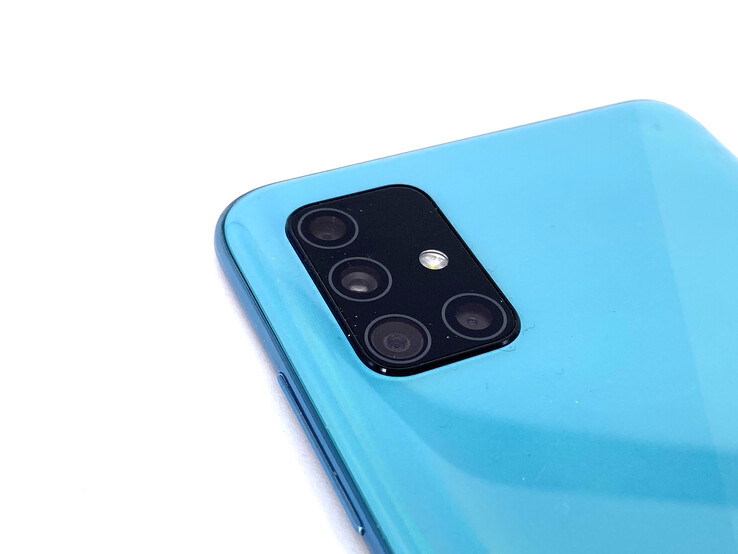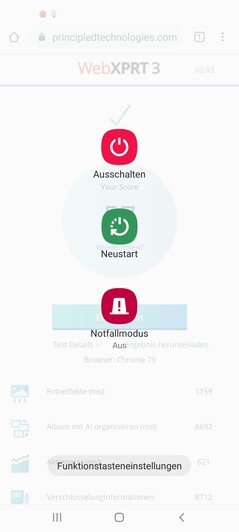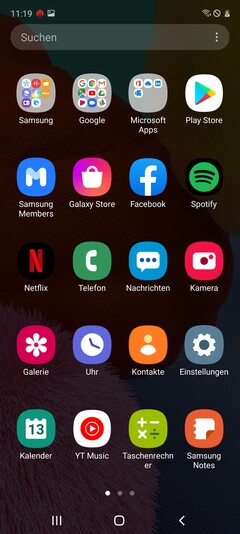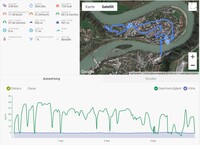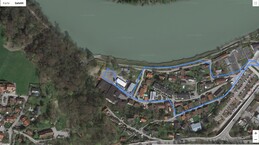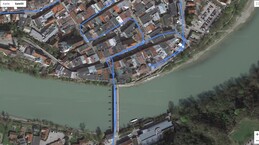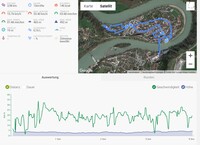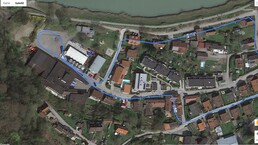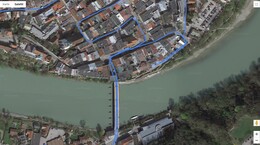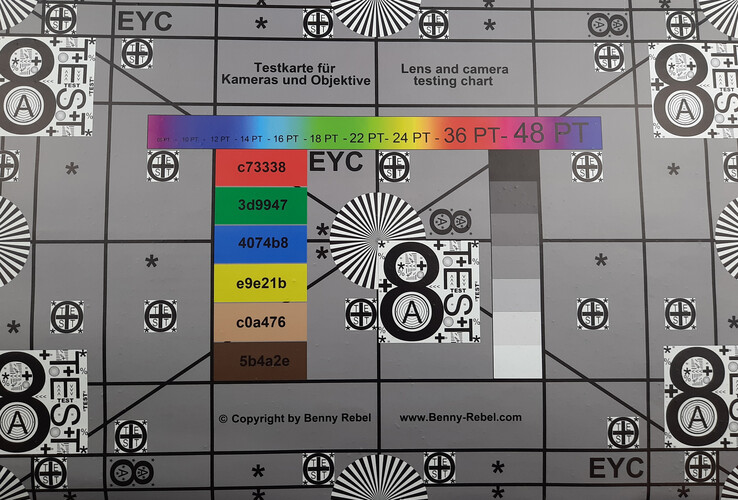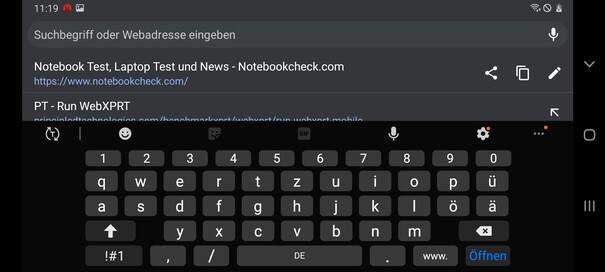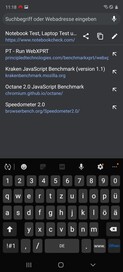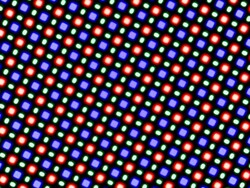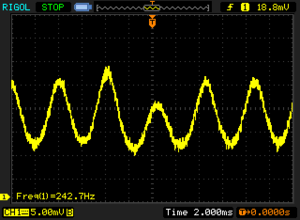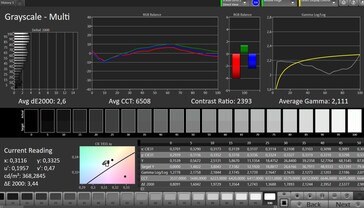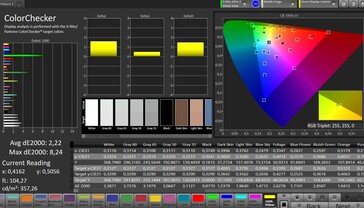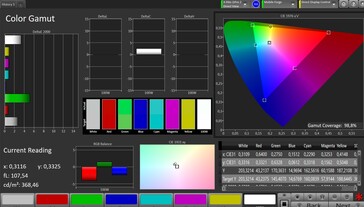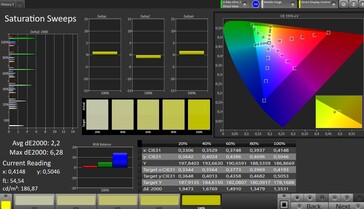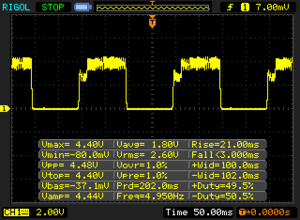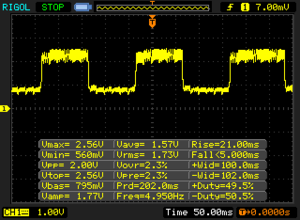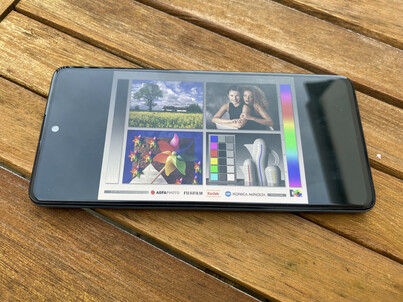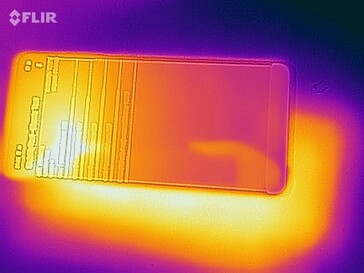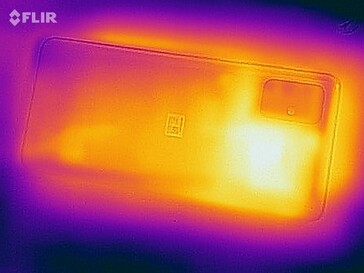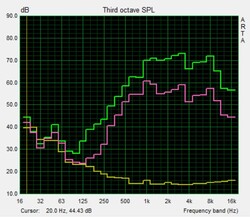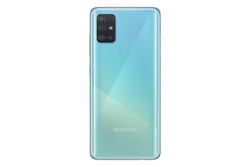Samsung Galaxy A51 Smartphone Review – Dedicated to success
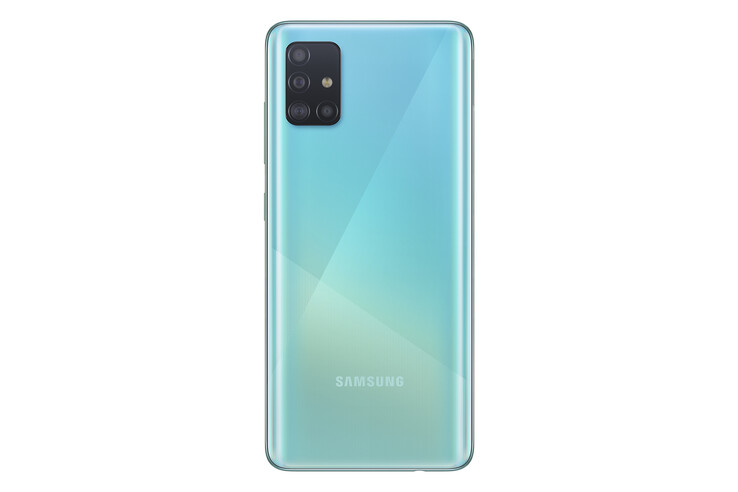
The fact that users trust Samsung and its smartphones is confirmed by the sales figures of the largest smartphone manufacturer of the world. Last year's update of the Galaxy A series, which covers a wide price segment ranging from $100 to $750 with its many devices, was a great success: The devices were brought up to date and offered a great price-to-performance ratio which buyers rewarded accordingly.
The Galaxy A50 was one of the most successful models, so it is no surprise that Samsung has chosen it as one of the first devices to receive an update in this new decade. The Galaxy A51 is a little more expensive than its predecessor but offers a new camera technology, even more modern exteriors and a newer SoC. It sounds like a useful update - but of course we will be taking a very close look at it in our detailed review. Let's get started.
Comparison Devices
Rating | Date | Model | Weight | Drive | Size | Resolution | Price |
|---|---|---|---|---|---|---|---|
| 79.8 % v7 (old) | 01 / 2020 | Samsung Galaxy A51 Exynos 9611, Mali-G72 MP3 | 172 g | 128 GB UFS 2.0 Flash | 6.50" | 2400x1080 | |
| 79.8 % v7 (old) | 04 / 2019 | Samsung Galaxy A50 Exynos 9610, Mali-G72 MP3 | 166 g | 128 GB UFS 2.1 Flash | 6.40" | 2340x1080 | |
| 81.6 % v7 (old) | 07 / 2019 | Xiaomi Mi 9T SD 730, Adreno 618 | 191 g | 64 GB UFS 2.0 Flash | 6.39" | 2340x1080 | |
| 80.2 % v7 (old) | 07 / 2019 | Google Pixel 3a SD 670, Adreno 616 | 147 g | 64 GB eMMC Flash | 5.60" | 2220x1080 | |
| 84.2 % v7 (old) | 12 / 2019 | Huawei Nova 5T Kirin 980, Mali-G76 MP10 | 174 g | 128 GB UFS 2.1 Flash | 6.26" | 2340x1080 |
Case – pearl effect and a slim waistline
While the Galaxy A50 featured a waterdrop notch, the Galaxy A51 has an even more modern and minimalistic look thanks to its simple hole-punch camera with the picture continuing all around it. While this does not make a big difference in practice, the few pixels between the camera and the edge can hardly be put to real use, it does give the Galaxy A51 an even more flashy appearance.
Not much has changed in terms of size and weight: the Galaxy A51 is actually slightly heavier and a little thicker than its predecessor. With a screen size of 6.5 inches, the Galaxy phone is ideal for slightly larger hands, but has a good feel to it, is comfortable to hold, not too heavy and still looks quite elegant.
The back has a pearl effect gloss finish and various patterns. It appears to be of high quality although it does give way quite easily under pressure. This is fairly normal for a device of this price range. Transitions between materials are hardly noticeable and the workmanship on this phone gives a very good impression.
Connectivity – quite a lot of storage
The Galaxy phone continues to have 128 GB of storage, which are combined with 4 GB of RAM. Other devices such as the Google Pixel 3a, which are similarly expensive, only offer 64 GB of storage, so this can be considered quite generous.
The drawer contains two SIM slots as well as a dedicated microSD slot. This means that users can use two SIM cards and a microSD card simultaneously. The phone also supports NFC and Bluetooth 5.0 as well as the option to receive FM radio.
The USB C port only supports USB 2.0 speeds. Instead, the phone still offers a 3.5-mm audio jack for those who prefer to use analogue headphones.
Software – Galaxy A51 with OneUI
The Samsung OneUI is modern and good-looking. The Galaxy A51 comes with OneUI 2.0, which is based on Android 10. The security patches are dated December 2019 at the time of testing, which is still fairly recent.
Samsung has included a fair share of third-party apps that cannot be fully deleted and continue to occupy storage space even when they are deactivated. The manufacturer itself has also installed some of its own software, such as Galaxy Health or Smart Things.
The phone has a Widevine DRM L1 certification, which means that streamed content can be watched on the device in HD.
Communication and GPS – more LTE
Like the Galaxy A50 our test unit's maximum LTE speed is 600 MBit/s (download), which is very normal for a device of this price range. We are pleased that the phone now supports more LTE bands compared to the predecessor, which means that it is more likely to work overseas. The LTE reception remains good when walking through town between high buildings.
The Wi-Fi speed of the Galaxy A50 wasn't its forte: while the results were average, the competition was significantly faster. The Galaxy A51 has a similar fate despite its Netgear Nighthawk AX12 doing slightly better in our standardized test. The Google Pixel 3a, for example, manages to transfer a lot more data via Wi-Fi within the same time.
In practice, websites on the Galaxy A51 load fairly quickly although images may take a little longer to load while scrolling. Reception hardly drops at a distance of 10 meters (~33 feet) to the router and with three walls in between. Although websites load a little more slowly, this difference is not really noticeable.
| Networking | |
| iperf3 transmit AX12 | |
| Google Pixel 3a | |
| Huawei Nova 5T | |
| Samsung Galaxy A51 | |
| Xiaomi Mi 9T | |
| Samsung Galaxy A50 | |
| iperf3 receive AX12 | |
| Google Pixel 3a | |
| Xiaomi Mi 9T | |
| Huawei Nova 5T | |
| Samsung Galaxy A51 | |
| Samsung Galaxy A50 | |
The phone was able to locate itself within 3 meters (~10 feet) fairly quickly and the compass works well. Google Maps is fairly precise as well.
The Samsung Galaxy A51 does quite a good job in our practical test (a bike ride with the Garmin Edge 520 as our reference navigation system). Although it often positions us next to the road and sometimes crosses houses, the deviations are never that bad and the smartphone can definitely be used as a navigation system.
Telephone and Call Quality – short dropouts
Samsung uses its own telephony app that has a very clean design and can also display nearby places that can be contacted directly if necessary.
The phone supports VoLTE and VoWiFi.
The call quality is decent, although the predecessor's might have been a bit better: Our voice, for example, is not transmitted to our call partner when we speak quietly over speakerphone. We always hear our call partner clearly, although dropouts do occur occasionally, which can be irritating.
Camera – another lens
The biggest difference between the Galaxy A50 and its successor is probably the camera: the Galaxy A51 has an additional macro lens on the back and the MP of the main camera has increased noticeably to 48 MP. The standard resolution is still 12 MP because the camera combines four pixels to one large pixel for a better image with less noise.
Below, you can see some photos taken on a walk with the Galaxy A51. We immediately noticed that the photos taken with the Galaxy smartphone were slightly too dark but were pleased with the image sharpness and details. Our camera comparison confirmed the first impressions we got on our photography walk: The images could be brighter and sharpness is good considering this is a mid-range smartphone.
The Galaxy A51 does a decent job in low lighting as well and details on our test chart are still noticeable at 1 lux. Our low-light test photo taken at candlelight still shows several details clearly, although it could be brighter. We were a little annoyed by the fact that we managed to improve the delineation in dark areas without losing details in brighter sections by manually increasing the brightness during our photography walk. This means that the camera could offer better dynamics but that camera software simply does not make use of this possibility.
Another artificial limitation based on software that separates this phone from the high-end segment: The zoom function cannot be used continuously between the wide-angle, the standard and the macro lens - users are forced to choose one lens. The macro lens even requires you to choose a separate camera mode to be able to take photos with it.
The front camera has a resolution of 32 MP and takes decent pictures, although they could be sharper.
Users must again choose between the standard or wide-angle lens when recording videos. The main camera enables you to record 4K videos at 30 fps, although some effects as well as digital image stabilization are not possible at maximum resolution. The transition between different exposure levels is smooth although you can occasionally see some pixel borders in direct light. The overall video quality is decent for this price range.
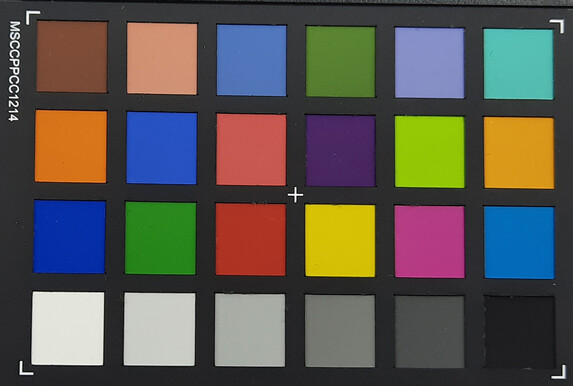
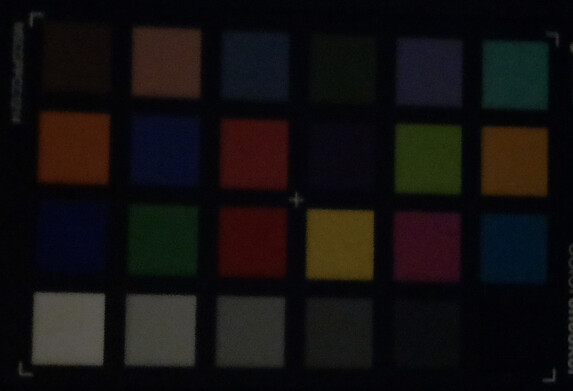
Accessories and Warranty – 24 months of security
The Galaxy A51 is delivered with a quick-charge AC adapter as well as a USB-A-to-USB-C charging cable, a headset and a SIM tool.
Samsung gives users 24 months of warranty, which can either be claimed via the retailer or directly via one of the Samsung Service Centers which exist in many larger cities.
Input Devices & Handling – in-screen fingerprint reader on the Galaxy A51
The touchscreen is nice to use, the hardware buttons on the right of the device are relatively narrow (like on the predecessor) but easy to find and they respond well when pressed.
The keyboard app is from Samsung itself and is similar to Apple's virtual keyboard. While it works reliably, the phone is slightly narrower than its predecessor, which also means that there is less space for the keys when typing in portrait mode. This can make it somewhat more difficult to hit the right key when typing.
The integrated fingerprint sensor works well although it is not quite as fast and reliable as a dedicated sensor, e.g. on the back, would be. Face recognition works well via the software too and unlocks the smartphone reliably, although you should keep in mind that this method isn't quite as fail-safe as others and similar-looking people could use it to unlock the smartphone.
Display – accurate AMOLED
We nowadays expect Samsung to equip even affordable devices with a high-quality AMOLED display and the Galaxy A51 does not disappoint: As the aspect ratio has changed, we now have a few more pixels along the length than we did on the Galaxy A50. Apart from that, not much has changed. The expanded Full-HD resolution is similar and the same for all other comparison devices.
The display doesn't become quite as bright in boost mode (when the brightness sensor is activated and at maximum brightness) as its predecessor did. However, the measured average of 589 cd/m²is still a good result. The maximum brightness is significantly lower when the brightness sensor is turned off.
| |||||||||||||||||||||||||
Brightness Distribution: 94 %
Center on Battery: 589 cd/m²
Contrast: ∞:1 (Black: 0 cd/m²)
ΔE ColorChecker Calman: 2.22 | ∀{0.5-29.43 Ø4.79}
ΔE Greyscale Calman: 2.6 | ∀{0.09-98 Ø5}
98.8% sRGB (Calman 2D)
Gamma: 2.111
CCT: 6508 K
| Samsung Galaxy A51 AMOLED, 2400x1080, 6.5" | Samsung Galaxy A50 AMOLED, 2340x1080, 6.4" | Xiaomi Mi 9T AMOLED, 2340x1080, 6.4" | Google Pixel 3a P-OLED, 2220x1080, 5.6" | Huawei Nova 5T LTPS, 2340x1080, 6.3" | |
|---|---|---|---|---|---|
| Screen | -2% | 11% | -33% | -88% | |
| Brightness middle (cd/m²) | 589 | 644 9% | 589 0% | 403 -32% | 524 -11% |
| Brightness (cd/m²) | 589 | 628 7% | 589 0% | 411 -30% | 510 -13% |
| Brightness Distribution (%) | 94 | 91 -3% | 96 2% | 96 2% | 86 -9% |
| Black Level * (cd/m²) | 0.39 | ||||
| Colorchecker dE 2000 * | 2.22 | 2.64 -19% | 2.5 -13% | 5.1 -130% | 6.6 -197% |
| Colorchecker dE 2000 max. * | 8.24 | 9.23 -12% | 4.9 41% | 11 -33% | 12.2 -48% |
| Greyscale dE 2000 * | 2.6 | 2.5 4% | 1.6 38% | 2 23% | 9.1 -250% |
| Gamma | 2.111 104% | 2.024 109% | 2.24 98% | 2.22 99% | 2.34 94% |
| CCT | 6508 100% | 6649 98% | 6544 99% | 6589 99% | 8987 72% |
| Contrast (:1) | 1344 |
* ... smaller is better
Screen Flickering / PWM (Pulse-Width Modulation)
| Screen flickering / PWM detected | 242.7 Hz | ||
The display backlight flickers at 242.7 Hz (worst case, e.g., utilizing PWM) . The frequency of 242.7 Hz is relatively low, so sensitive users will likely notice flickering and experience eyestrain at the stated brightness setting and below. In comparison: 53 % of all tested devices do not use PWM to dim the display. If PWM was detected, an average of 8152 (minimum: 5 - maximum: 343500) Hz was measured. | |||
Colors appear strong and the black value looks perfect thanks to AMOLED technology. We did not notice a color cast subjectively and most colors seem to be well calibrated ex-works according to our measurements with the spectrophotometer and the CalMAN software.
The PWM curve shows the typical progression for an AMOLED screen: Oscillating between 100 and 280 Hz as soon as brightness is reduced. This means that sensitive users had better try out the screen before purchase, as they might react to the flickering display after prolonged use. This can lead to headaches for some users.
The response times might be too slow for hardcore gamers, but casual gamers should be happy with them.
Display Response Times
| ↔ Response Time Black to White | ||
|---|---|---|
| 24 ms ... rise ↗ and fall ↘ combined | ↗ 21 ms rise | |
| ↘ 3 ms fall | ||
| The screen shows good response rates in our tests, but may be too slow for competitive gamers. In comparison, all tested devices range from 0.1 (minimum) to 240 (maximum) ms. » 53 % of all devices are better. This means that the measured response time is worse than the average of all tested devices (20.3 ms). | ||
| ↔ Response Time 50% Grey to 80% Grey | ||
| 26 ms ... rise ↗ and fall ↘ combined | ↗ 21 ms rise | |
| ↘ 5 ms fall | ||
| The screen shows relatively slow response rates in our tests and may be too slow for gamers. In comparison, all tested devices range from 0.165 (minimum) to 636 (maximum) ms. » 34 % of all devices are better. This means that the measured response time is better than the average of all tested devices (31.7 ms). | ||
Performance – could be better
We are familiar with our test unit's SoC, the Samsung Exynos 9611, from the Galaxy M30s. It usually offers a decent mid-range performance with 8 cores and a maximum clock rate of 2.3 GHz. The Galaxy A51 is faster than its predecessor in most of our benchmarks but cannot keep up with some other devices in this price range: the Xiaomi Mi 9T and the Huawei Nova 5T are both significantly faster.
The Galaxy A51 works very well in everyday use and also deals well with multi-tasking, although you can tell that this might not be the fastest SoC around when using more demanding apps.
| PCMark for Android | |
| Work performance score (sort by value) | |
| Samsung Galaxy A51 | |
| Samsung Galaxy A50 | |
| Xiaomi Mi 9T | |
| Google Pixel 3a | |
| Huawei Nova 5T | |
| Average Samsung Exynos 9611 (5777 - 6697, n=7) | |
| Work 2.0 performance score (sort by value) | |
| Samsung Galaxy A51 | |
| Samsung Galaxy A50 | |
| Xiaomi Mi 9T | |
| Google Pixel 3a | |
| Huawei Nova 5T | |
| Average Samsung Exynos 9611 (5080 - 5925, n=7) | |
| GFXBench 3.0 | |
| on screen Manhattan Onscreen OGL (sort by value) | |
| Samsung Galaxy A51 | |
| Samsung Galaxy A50 | |
| Xiaomi Mi 9T | |
| Google Pixel 3a | |
| Huawei Nova 5T | |
| Average Samsung Exynos 9611 (15 - 24, n=7) | |
| Average of class Smartphone (18 - 166, n=159, last 2 years) | |
| 1920x1080 1080p Manhattan Offscreen (sort by value) | |
| Samsung Galaxy A51 | |
| Samsung Galaxy A50 | |
| Xiaomi Mi 9T | |
| Google Pixel 3a | |
| Huawei Nova 5T | |
| Average Samsung Exynos 9611 (17 - 26, n=7) | |
| Average of class Smartphone (12 - 606, n=158, last 2 years) | |
| GFXBench 3.1 | |
| on screen Manhattan ES 3.1 Onscreen (sort by value) | |
| Samsung Galaxy A51 | |
| Samsung Galaxy A50 | |
| Xiaomi Mi 9T | |
| Google Pixel 3a | |
| Huawei Nova 5T | |
| Average Samsung Exynos 9611 (8.9 - 14, n=7) | |
| Average of class Smartphone (11 - 166, n=159, last 2 years) | |
| 1920x1080 Manhattan ES 3.1 Offscreen (sort by value) | |
| Samsung Galaxy A51 | |
| Samsung Galaxy A50 | |
| Xiaomi Mi 9T | |
| Google Pixel 3a | |
| Huawei Nova 5T | |
| Average Samsung Exynos 9611 (10 - 16, n=7) | |
| Average of class Smartphone (8.4 - 413, n=158, last 2 years) | |
The Galaxy A51 is slightly slower than its competition while browsing the web and cannot quite keep up with its predecessor either. While the smartphone does not seem slow when browsing during everyday use, the difference in speed compared to the fastest devices in this price range is noticeable.
| Jetstream 2 - 2.0 Total Score | |
| Average of class Smartphone (23.8 - 387, n=156, last 2 years) | |
| Xiaomi Mi 9T (Chrome 75.0.3770.101) | |
| Google Pixel 3a | |
| Average Samsung Exynos 9611 (27.5 - 30.6, n=7) | |
| Samsung Galaxy A51 (Chrome 79) | |
| JetStream 1.1 - Total Score | |
| Huawei Nova 5T (Chrome 74) | |
| Xiaomi Mi 9T (Chrome 75.0.3770.101) | |
| Samsung Galaxy A51 (Chrome 79) | |
| Average Samsung Exynos 9611 (47.5 - 51.9, n=7) | |
| Speedometer 2.0 - Result 2.0 | |
| Average of class Smartphone (15.2 - 643, n=132, last 2 years) | |
| Xiaomi Mi 9T (Chrome 75.0.3770.101) | |
| Samsung Galaxy A50 (Chome 73) | |
| Samsung Galaxy A51 (Chrome 79) | |
| Average Samsung Exynos 9611 (26.6 - 30.5, n=7) | |
| WebXPRT 3 - Overall | |
| Average of class Smartphone (38 - 380, n=41, last 2 years) | |
| Huawei Nova 5T (Chrome 74) | |
| Xiaomi Mi 9T (Chrome 75.0.3770.101) | |
| Samsung Galaxy A50 (Chrome 73) | |
| Samsung Galaxy A51 (Chrome 79) | |
| Average Samsung Exynos 9611 (46 - 57, n=7) | |
| Octane V2 - Total Score | |
| Average of class Smartphone (2228 - 121337, n=203, last 2 years) | |
| Huawei Nova 5T (Chrome 74) | |
| Xiaomi Mi 9T (Chrome 75.0.3770.101) | |
| Google Pixel 3a | |
| Samsung Galaxy A50 (Chrome 73) | |
| Samsung Galaxy A51 (Chrome 79) | |
| Average Samsung Exynos 9611 (7442 - 10687, n=7) | |
| Mozilla Kraken 1.1 - Total | |
| Average Samsung Exynos 9611 (4332 - 6212, n=7) | |
| Samsung Galaxy A51 (Chrome 79) | |
| Samsung Galaxy A50 (Chrome 73) | |
| Google Pixel 3a | |
| Xiaomi Mi 9T (Chrome 75.0.3770.101) | |
| Huawei Nova 5T (Chrome 74) | |
| Average of class Smartphone (257 - 28190, n=158, last 2 years) | |
* ... smaller is better
The internal UFS storage in the Galaxy A51 reaches similar speeds as the other devices in this price range, although there still are significantly faster devices such as the Nova 5T. Overall, apps start fairly quickly and data is retrieved fast enough as well.
We measured normal transfer rates during our write and read tests with our reference microSD card Toshiba Exceria Pro M501.
| Samsung Galaxy A51 | Samsung Galaxy A50 | Xiaomi Mi 9T | Google Pixel 3a | Huawei Nova 5T | Average 128 GB UFS 2.0 Flash | Average of class Smartphone | |
|---|---|---|---|---|---|---|---|
| AndroBench 3-5 | -14% | 4% | -12% | 63% | 3% | 406% | |
| Sequential Read 256KB (MB/s) | 496.1 | 507 2% | 492.7 -1% | 302 -39% | 904 82% | 530 ? 7% | 2211 ? 346% |
| Sequential Write 256KB (MB/s) | 184.9 | 192.1 4% | 179.2 -3% | 253.9 37% | 186.4 1% | 212 ? 15% | 1827 ? 888% |
| Random Read 4KB (MB/s) | 110.8 | 98.9 -11% | 128.6 16% | 63.6 -43% | 146.2 32% | 130.6 ? 18% | 294 ? 165% |
| Random Write 4KB (MB/s) | 104.4 | 18.2 -83% | 107.8 3% | 99.9 -4% | 247.1 137% | 101.2 ? -3% | 337 ? 223% |
| Sequential Read 256KB SDCard (MB/s) | 73 ? | 73.9 ? 1% | 68.3 ? -6% | ||||
| Sequential Write 256KB SDCard (MB/s) | 60.1 ? | 60.7 ? 1% | 53.2 ? -11% |
Games – for casual gamers
The Galaxy A51 is suitable for gaming - although you will need to limit the settings when playing more demanding games: Asphalt 9 is a lot smoother at low settings than at high ones while Arena of Valor even manages 60 fps at high details, which is quite impressive for a mid-range smartphone. We measure the framerates with GameBench.
Games are controlled easily via the position sensor and touchscreen.
Emissions – no throttling, hardly any heat development
Temperature
The temperature development of the Samsung Galaxy A51 is limited: There is no noticeable heat development while idling (device turned on but without load) and the device is only slightly warmer than the ambient temperature. While it does heat up slightly under load, the temperature remains comfortable for users at all times. We measured a maximum surface temperature of 39.9 °C (103.8 °F) at the top of the display.
We used the GFXBench battery test to find out whether the phone throttled under continuous load, but this was not the case.
(+) The maximum temperature on the upper side is 39.9 °C / 104 F, compared to the average of 35.2 °C / 95 F, ranging from 21.9 to 247 °C for the class Smartphone.
(+) The bottom heats up to a maximum of 39.3 °C / 103 F, compared to the average of 34 °C / 93 F
(+) In idle usage, the average temperature for the upper side is 26.4 °C / 80 F, compared to the device average of 32.9 °C / 91 F.
Speaker
The speaker is positioned along the bottom of the device and continues to do a good job in this generation. It isn't quite as loud as it was in the Galaxy A50 but the sound characteristics are similar. This includes a fairly warm sound pattern without strong highs and a well-rounded sound. HiFi enthusiasts will prefer to use external speakers or headphones, but the speakers are definitely suitable for getting the idea of a song or watching the occasional YouTube video.
You can connect audio devices via Bluetooth or the 3.5-mm audio jack. This works reliably and the sound is transmitted nicely.
Samsung Galaxy A51 audio analysis
(±) | speaker loudness is average but good (81.7 dB)
Bass 100 - 315 Hz
(-) | nearly no bass - on average 65.7% lower than median
(+) | bass is linear (0% delta to prev. frequency)
Mids 400 - 2000 Hz
(-) | nearly no mids - on average 65.7% lower than median
(+) | mids are linear (0% delta to prev. frequency)
Highs 2 - 16 kHz
(-) | nearly no highs - on average 65.7% lower than median
(+) | highs are linear (0% delta to prev. frequency)
Overall 100 - 16.000 Hz
(-) | overall sound is not linear (123.1% difference to median)
Compared to same class
» 92% of all tested devices in this class were better, 7% similar, 1% worse
» The best had a delta of 11%, average was 35%, worst was 134%
Compared to all devices tested
» 97% of all tested devices were better, 2% similar, 0% worse
» The best had a delta of 4%, average was 24%, worst was 134%
Samsung Galaxy A50 audio analysis
(+) | speakers can play relatively loud (85 dB)
Bass 100 - 315 Hz
(-) | nearly no bass - on average 73.9% lower than median
(+) | bass is linear (0% delta to prev. frequency)
Mids 400 - 2000 Hz
(-) | nearly no mids - on average 73.9% lower than median
(+) | mids are linear (0% delta to prev. frequency)
Highs 2 - 16 kHz
(-) | nearly no highs - on average 73.9% lower than median
(+) | highs are linear (0% delta to prev. frequency)
Overall 100 - 16.000 Hz
(-) | overall sound is not linear (119.9% difference to median)
Compared to same class
» 88% of all tested devices in this class were better, 9% similar, 3% worse
» The best had a delta of 11%, average was 35%, worst was 134%
Compared to all devices tested
» 97% of all tested devices were better, 3% similar, 1% worse
» The best had a delta of 4%, average was 24%, worst was 134%
Battery Life – Galaxy A51 doesn't have great stamina
Power Consumption
The power consumption is on par with that of the Galaxy M30s with the same SoC. While the Galaxy A51 is less demanding under maximum load, it consumes more power while idling. The Galaxy smartphone does a decent job compared to other smartphones of this price range and requires relatively little power.
| Off / Standby | |
| Idle | |
| Load |
|
Key:
min: | |
| Samsung Galaxy A51 4000 mAh | Samsung Galaxy A50 4000 mAh | Xiaomi Mi 9T 4000 mAh | Google Pixel 3a 3000 mAh | Huawei Nova 5T 3750 mAh | Average Samsung Exynos 9611 | Average of class Smartphone | |
|---|---|---|---|---|---|---|---|
| Power Consumption | -2% | 38% | 27% | -12% | -31% | -15% | |
| Idle Minimum * (Watt) | 0.9 | 0.8 11% | 0.54 40% | 0.61 32% | 0.87 3% | 1.173 ? -30% | 0.853 ? 5% |
| Idle Average * (Watt) | 1.7 | 1.5 12% | 0.95 44% | 1.56 8% | 2.34 -38% | 2.28 ? -34% | 1.43 ? 16% |
| Idle Maximum * (Watt) | 1.8 | 1.7 6% | 1.08 40% | 1.6 11% | 2.4 -33% | 2.86 ? -59% | 1.609 ? 11% |
| Load Average * (Watt) | 5.2 | 5.9 -13% | 2.7 48% | 2.67 49% | 4.56 12% | 5.97 ? -15% | 7.09 ? -36% |
| Load Maximum * (Watt) | 6.6 | 8.3 -26% | 5.4 18% | 4.33 34% | 6.97 -6% | 7.83 ? -19% | 11.2 ? -70% |
* ... smaller is better
Battery Life
Considering that the Galaxy A51 consumes relatively little power in our tests and has a decently-sized battery with a capacity of 4000 mAh, its battery life is slightly disappointing. Similarly to the Galaxy A50, our test unit managed around 11:40 hours in our Wi-Fi test. This isn't a bad result in itself, and should easily last you a day or maybe two if you're careful.
The Xiaomi Mi 9T, however, manages to get a lot more battery life out of a similarly-sized battery, probably because it has a more aggressive energy management. The Google Pixel 3a has a significantly smaller battery and has a considerably shorter battery life. Overall, we would recommend Samsung to take a closer look at its energy management if it wants to remain competitive in future.
The Galaxy A51 has a 15-watt AC adapter, which is the lowest output that can be considered a fast charger. The phone requires around 2 hours to fully recharge, which is a normal rate for this price range.
| Samsung Galaxy A51 4000 mAh | Samsung Galaxy A50 4000 mAh | Xiaomi Mi 9T 4000 mAh | Google Pixel 3a 3000 mAh | Huawei Nova 5T 3750 mAh | |
|---|---|---|---|---|---|
| Battery runtime | -2% | 25% | -12% | 11% | |
| Reader / Idle (h) | 28.2 | 26.5 -6% | 35.6 26% | ||
| H.264 (h) | 14.1 | 14.5 3% | 20.1 43% | ||
| WiFi v1.3 (h) | 11.6 | 11.7 1% | 16.5 42% | 10.2 -12% | 12.9 11% |
| Load (h) | 4.8 | 4.6 -4% | 4.3 -10% |
Pros
Cons
Verdict – good midrange
Samsung's Galaxy A51 is another mid-range device that has hardly any real weaknesses. Its cameras are one of its highlights - although the gap to the high-end is still noticeable, for example when it comes to low-light performance or zooming. Nonetheless, the Galaxy A51 can take some really nice pictures. The bright AMOLED screen is another pleasure - we were particularly impressed by the good color display.
The phone supports a significantly higher amount of LTE frequencies than its predecessor, but the Wi-Fi continues to be rather slow.
Samsung could have put in a little more work in terms of performance and the battery life can't quite keep up with that of other devices. These are aspects that are particularly noticeable in a direct comparison. Still, the Galaxy A51 is a reliable mid-range phone.
The Galaxy A51 is a mid-range smartphone that does a good job in all areas and takes good photos.
As Samsung has not really made any mistakes, we can definitely recommend the Galaxy A51 smartphone.
Samsung Galaxy A51
- 08/31/2022 v7 (old)
Florian Schmitt




